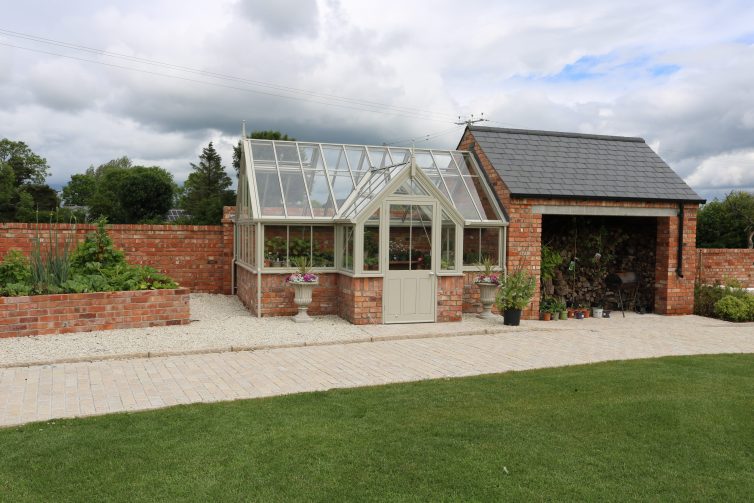Timber was the original material of choice for greenhouse construction,
Seen throughout the Victorian and Edwardian eras. The move away from the material in recent decades has been largely practical, as aluminium offered ease of maintenance, consistent performance, and simplified manufacturing processes. However, this transition came at a cost.
While aluminium structures may be efficient, they lack the warmth, natural beauty, and luxurious feel that timber provides. They can appear industrial and cold, failing to integrate harmoniously with garden environments where natural materials traditionally dominate. A growing movement among discerning gardeners and homeowners is challenging this status quo, seeking alternatives that offer not just functionality, but a connection to traditional craftsmanship.
Maintenance and longevity
One of the primary concerns gardeners express about timber greenhouses relates to maintenance requirements. However, with proper treatment and finishing, modern timber structures can actually require less ongoing attention than might be expected. High-quality coating systems can provide years of protection with minimal intervention, while the natural durability of thermally modified timber reduces the need for frequent repairs or replacements.
The modular nature of well-designed timber greenhouses also facilitates maintenance when it is required. Individual components can be accessed, repaired, or replaced without compromising the entire structure, potentially extending the building’s lifespan beyond what might be achievable with welded aluminium alternatives.
Ensuring sufficient ventilation
Ventilation remains one of the most critical aspects of greenhouse design, regardless of material choice. Effective air circulation prevents the buildup of excessive humidity, regulates temperature, and ensures healthy growing conditions. Luxury timber greenhouses incorporate sophisticated ventilation systems, including thermostatically controlled roof vents and innovative glazing systems that create air gaps for natural moisture management.
The environmental considerations
Today’s environmentally conscious consumers are increasingly scrutinising the sustainability credentials of their purchases, and greenhouse materials are no exception. Aluminium production is energy-intensive, requiring significant amounts of electricity and generating considerable carbon emissions during the smelting process. While aluminium is recyclable, the initial environmental impact remains substantial.
In contrast, responsibly sourced timber offers a more sustainable alternative. When harvested from Forest Stewardship Council (FSC) certified forests with proper chain of custody documentation, timber becomes a renewable resource that actively sequesters carbon throughout its lifecycle. The key lies in ensuring traceability – knowing that the wood has been tracked from source through to the final product guarantees genuine sustainability rather than good intentions or greenwashed claims.
The investment perspective
While premium timber greenhouses typically command higher initial prices than basic aluminium structures, they offer value propositions that extend beyond just functionality. The aesthetic enhancement to property and garden, combined with genuine sustainability credentials and potential longevity advantages, can justify the additional investment for homeowners who view their greenhouse as a long-term garden feature rather than a temporary growing space.
The sensory experience of working within a timber structure adds intangible value that purely functional alternatives cannot match.
Choosing the right approach
For gardeners seeking maximum functionality at minimum cost, aluminium may remain the practical choice. However, for the discerning homeowner who values architectural beauty, timber greenhouses offer compelling advantages.
The resurgence of interest in timber greenhouses reflects broader trends toward sustainable living, appreciation of natural materials, and the desire for garden structures that enhance rather than detract from outdoor spaces. As more manufacturers embrace responsible forestry practices and advanced timber treatment technologies, these beautiful, functional structures are reclaiming their rightful place in discerning gardens across the land.
Mervyn Montgomery is joint director of Hampton, an international designer and manufacturer
specialising in luxury timber greenhouses and bespoke glazed extensions.
